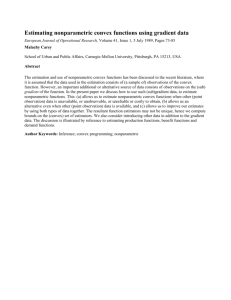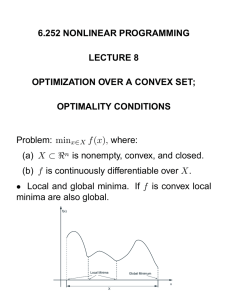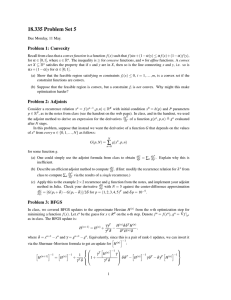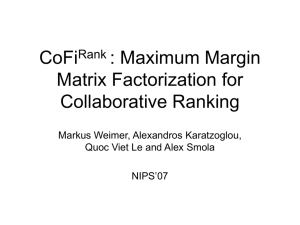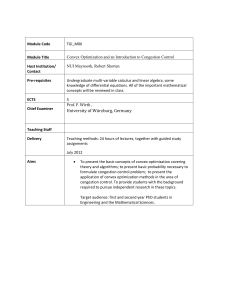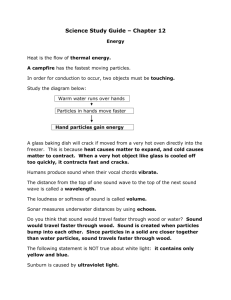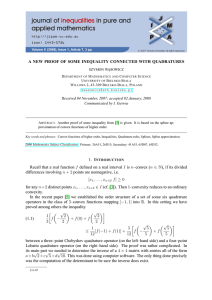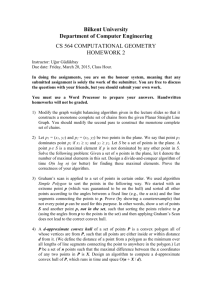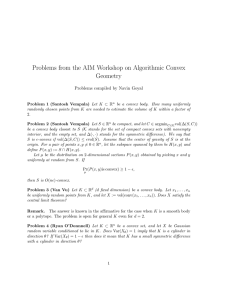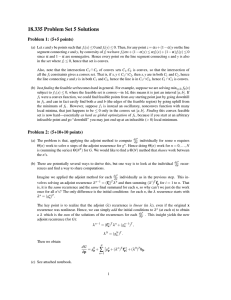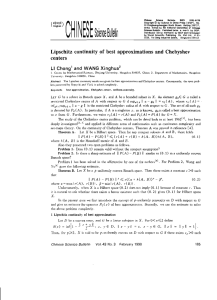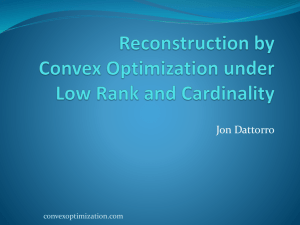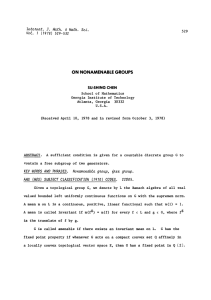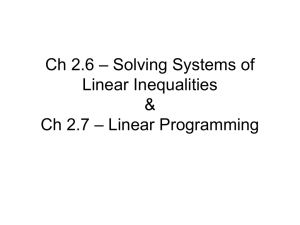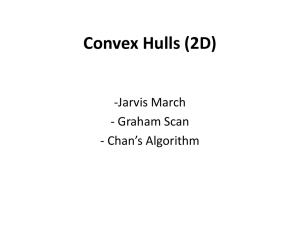A brief review of non-NN approaches to deep learning
advertisement
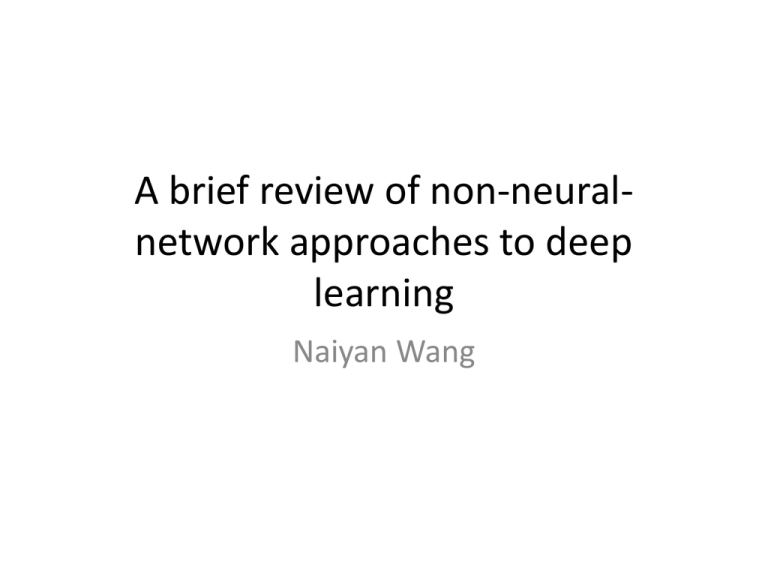
A brief review of non-neuralnetwork approaches to deep learning Naiyan Wang Outline • Non-NN Approaches – Deep Convex Net – Extreme Learning Machine – PCAnet – Deep Fisher Net (Already presented before) • Discussion Deep convex net • Each module is a twolayer convex network. • After we get the prediction from each module, we concatenate it with the original input, and send it to a new module. Deep Convex Net • For each module – We minimize – – U has a closed form solution: – Learning of W relies on gradient descent: – Note that no global fine tuning involved, so it can stack up to more than 10 layers. (Fast Training!) Deep Convex Net • A bit wired of why this works. • The learned features in mid-layers are NOT representative for the input. • Maybe learn the correlation between prediction and input could help? • Discussion? Deep Convex Net Deep Convex Net Extreme Learning Machine • It is also a two layer networks: – The first layer performs random projection of input data. – The second layer performs OLS/Ridge regression to learn the weight. • After that, we could take the transpose of the learned weight as the projection matrix, and stack several ELM into a deep one. Extreme Learning Machine • Extremely fast learning • Note that even with simple random projection and linear transformation, the results still can be improved! PCANet • In the first two layers, use patch PCA to learn the filters. • Then it binarizes the output in second layer, and calculate the histogram within a block. PCANet • To learn the filters, the authors also proposed to use Random initialization and LDA. • The results are acceptable in a wide range of datasets. Summary • Most of the paper (except deep Fisher Net) report their results on relatively toy data. We cannot draw any conclusion about their performance. • This could enlighten us some possible research directions. Discussion • Why deep architectures always help? (We don’t concern about overfitting now) – The representation power increases exponentially as more layers add in. – However the number of parameters increases linearly as more layers add in. • Given a fixed budget, this is a better way to organize the model. • Take PCA net as an example, if there are m, n neurons at first and second layer, then there exists an equivalent m*n single layer net. Discussion • Why CNN is so successful in image classification? – Data abstraction – Locality! (The image is a 2D structure with strong local correlation.) • The convolution architecture could propagate local information to a broader region – 1st: m * m, 2nd : n * n, then it corresponds to (m + n - 1) * (m + n - 1) in the original image. • This advantage is further expanded by spatial pooling. • Other ways to concern about these two issues simultaneously? Discussion • Convolution is a dense architecture. It induces a lot of unnecessary computation. • Could we come up a greedy or more clever selection in each layer to just focus on those discriminative patches? • Or possibly a “convolutional cascade”? Discussion • Random weights are adopted several times, and it yields acceptable results. • Pros: – Data independent – Fast • Cons: – Data independent • So could we combine random weights and learned weights to combat against overfitting? • Some work have been done on combining deterministic NN and stochastic NN.




